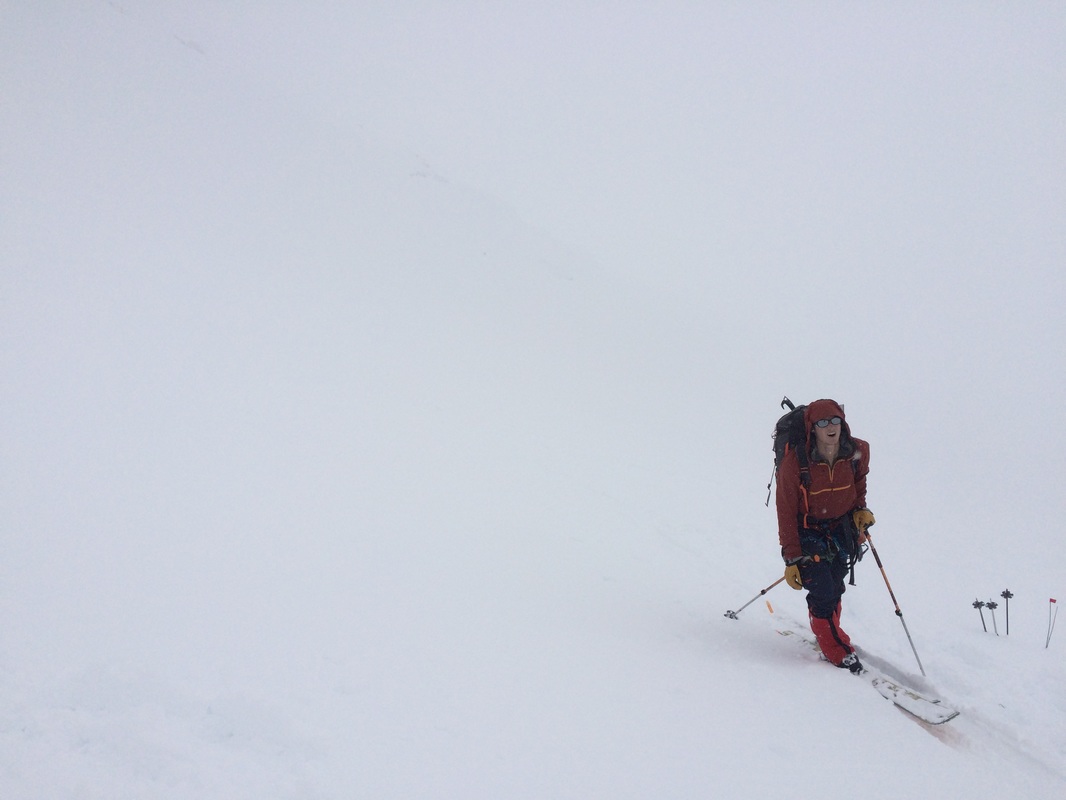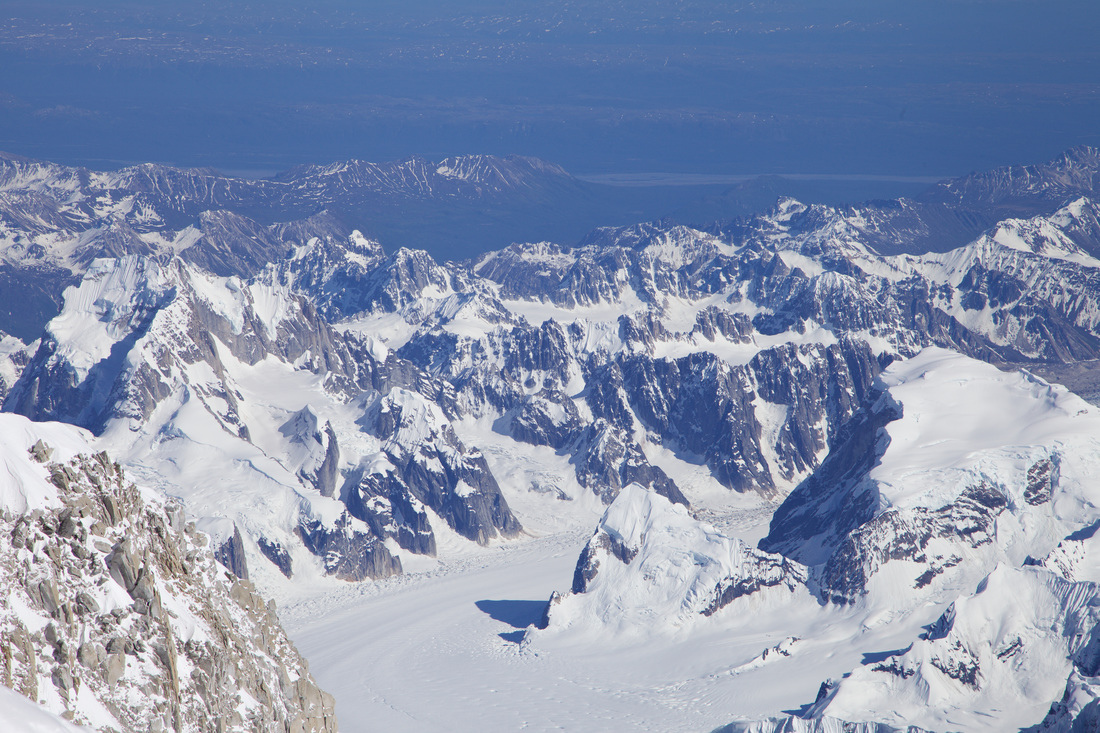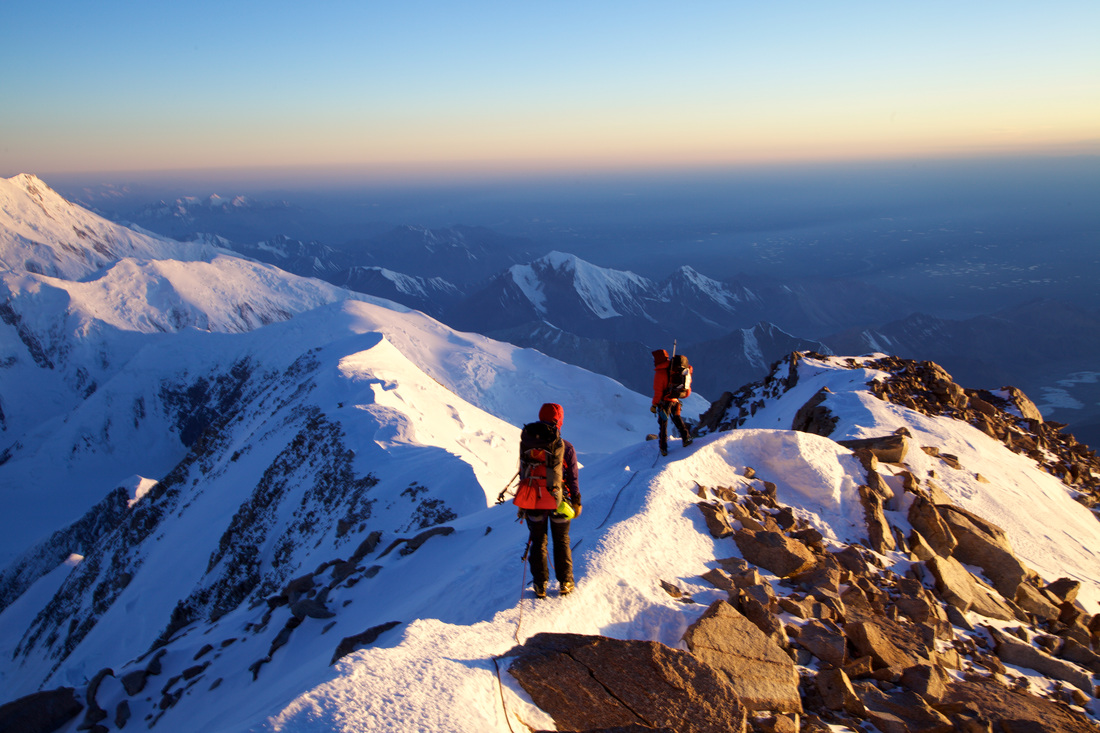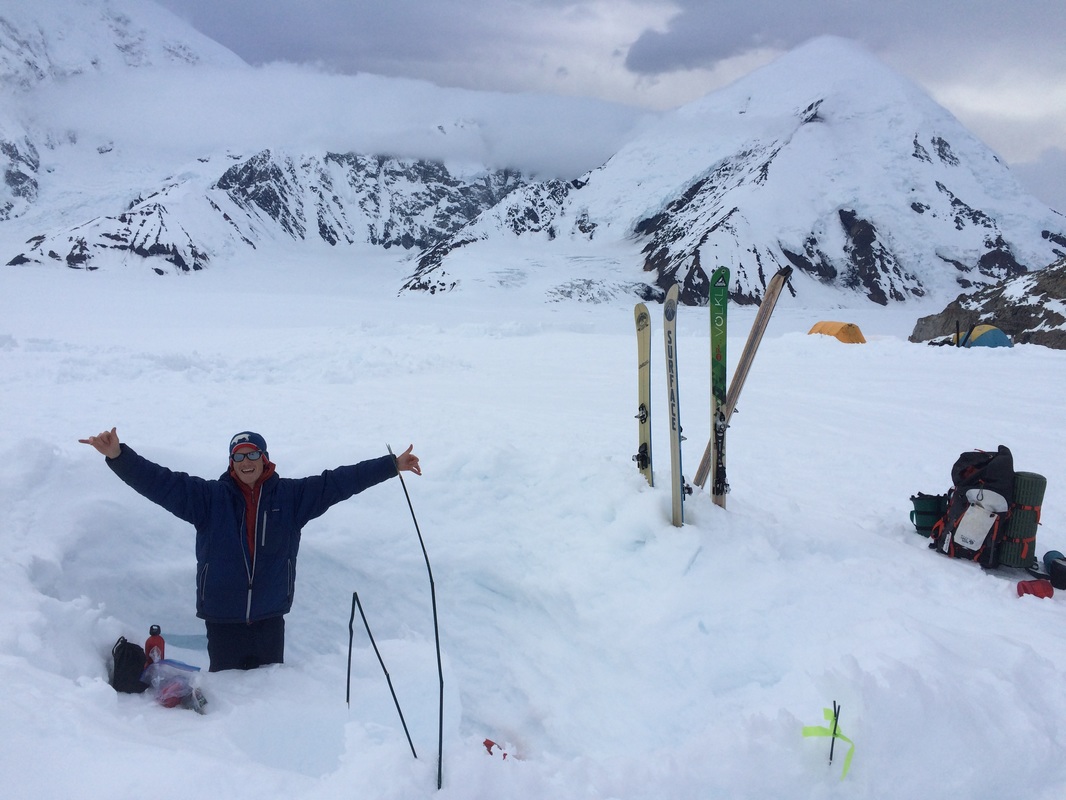By Ian Bolliger
ASC Snow and Ice Adventurer
On May 20, Peter McCarthy and I landed at Kahiltna Base Camp with the goal of summiting Denali and skiing the Orient Express or Messner Couloirs. Two days later, Dave and Hollie Leonard joined us and we set off. The week or so it took us to make it to 14,000 feet on the mountain spoiled us with warm, clear days and beautiful views.
ASC Snow and Ice Adventurer
On May 20, Peter McCarthy and I landed at Kahiltna Base Camp with the goal of summiting Denali and skiing the Orient Express or Messner Couloirs. Two days later, Dave and Hollie Leonard joined us and we set off. The week or so it took us to make it to 14,000 feet on the mountain spoiled us with warm, clear days and beautiful views.
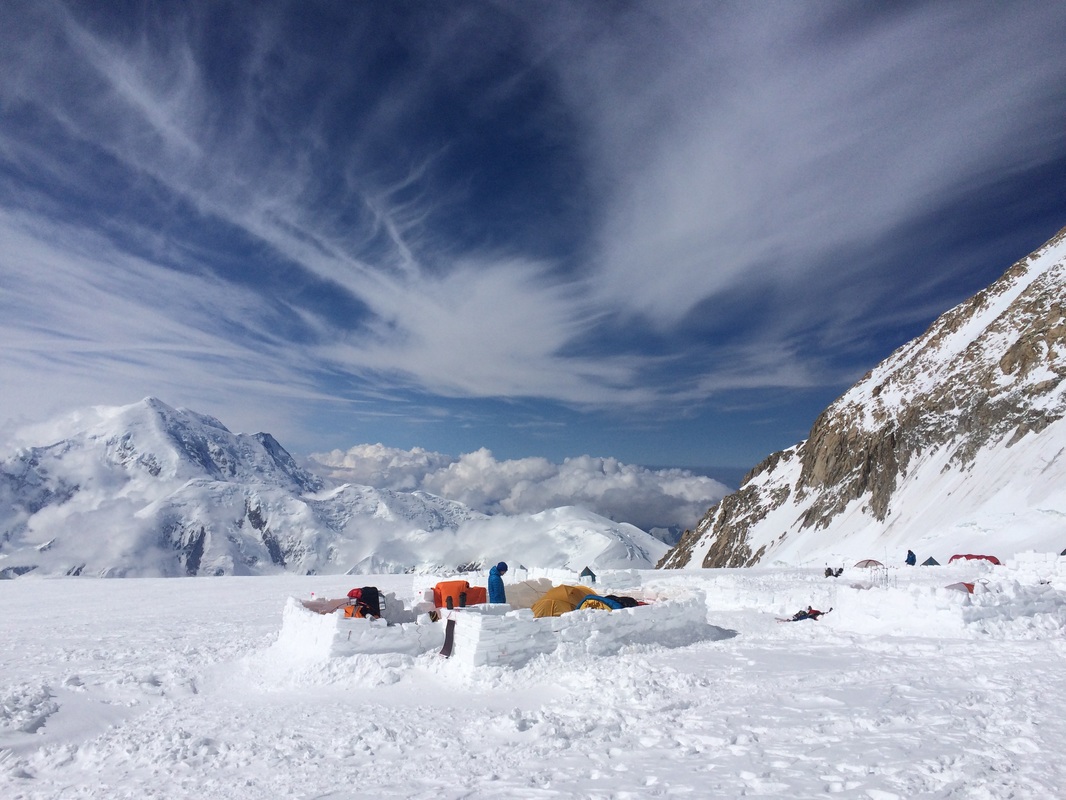
14k camp is where Denali climbers typically spend the most time acclimatizing and staging for their ascent of the upper mountain. On the last day of our weather window, these interesting cirrus clouds flew high above us, and before long before they turned a little more menacing. (Photo by Ian Bolliger)
When we were ready to start climbing the upper mountain, a series of storms thwarted us. After three and a half weeks on the mountain, we climbed to 17,000 feet three separate times but were unable to go higher. At that point, I had to leave, while Pete, Hollie and Dave stayed for five more days. They lucked out with a high-pressure system following my departure and reached the summit.
While on the mountain, we participated in the ASC Snow and Ice Project, collecting samples from 17,000 feet. I’m currently a graduate student studying alpine and arctic feedbacks to climate change, so I was particularly interested in capitalizing on this opportunity to further scientific understanding of glacial responses to climate change. Gathering the data provided us with objectives outside of self-indulgent summit goals, and also gave us a meaningful activity to perform on rest days, adding a unique challenge.
It was certainly as difficult, if not more so, than we had imagined. Although we sampled during a brief break in the storm, the wind and snow were blowing fiercely. Since we still had to get down to 14k camp that evening, digging the pit was a race against time. We alternated pit-digging duties, which allowed us to catch our breath one at a time—as best we could at that altitude. The flat field just outside of 17k camp where we took our samples is a depository for snow blown over the adjacent ridge, making the firm snowpack not entirely amenable to our shoveling.
Fortunately, we made it back to camp before the weather got too bad, and slept well knowing we were contributing valuable and difficult-to-obtain data from Denali’s high-altitude snowpack.
Ian Bolliger is a former ski racer turned amateur ski mountaineer and volunteer ski patroller from Seattle, Washington. In the real world, he pursues a PhD in Energy and Resources at UC Berkeley. Ian’s trip was supported by an American Alpine Club Live Your Dream Grant. Check out his blog on The Inertia to read more about his adventure in Alaska.
Ian Bolliger is a former ski racer turned amateur ski mountaineer and volunteer ski patroller from Seattle, Washington. In the real world, he pursues a PhD in Energy and Resources at UC Berkeley. Ian’s trip was supported by an American Alpine Club Live Your Dream Grant. Check out his blog on The Inertia to read more about his adventure in Alaska.
Learn more about the ASC Snow and Ice Project on our website, the Field Notes blog, and our Facebook, Twitter, Instagram and Google+ pages.

